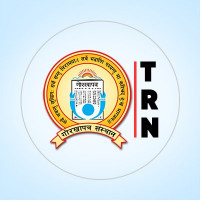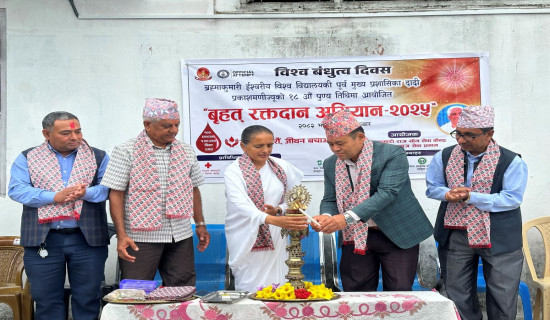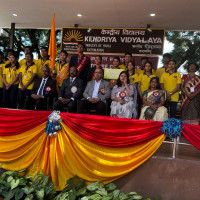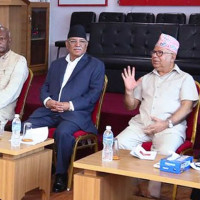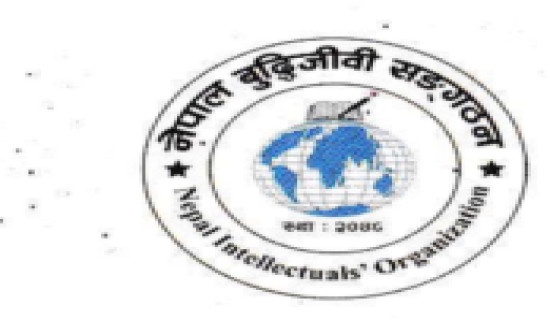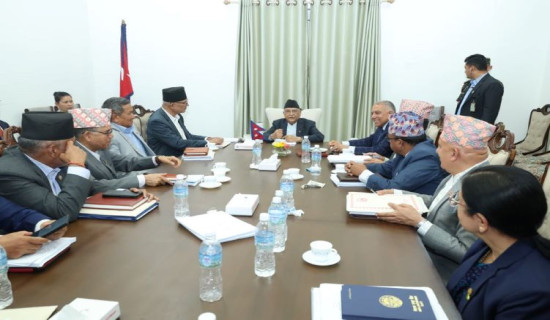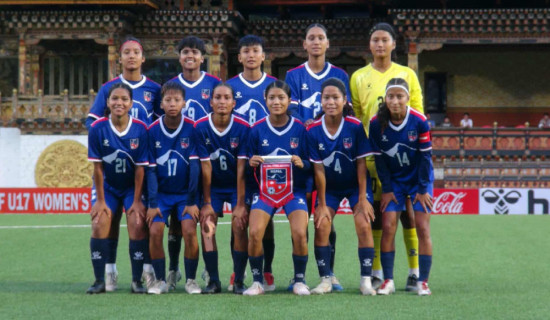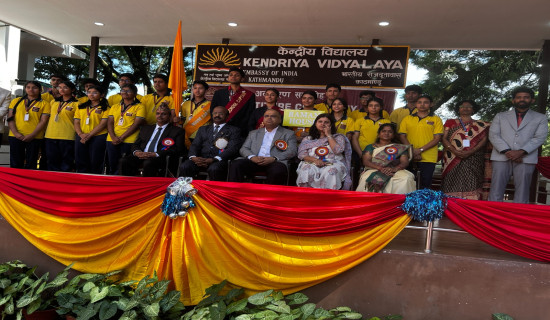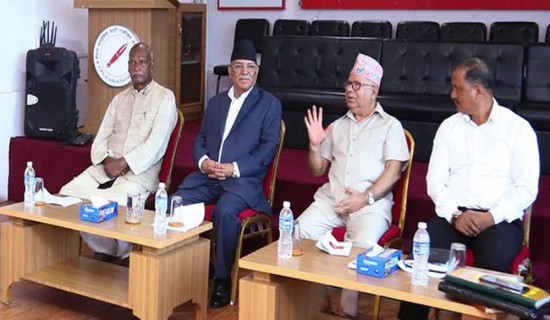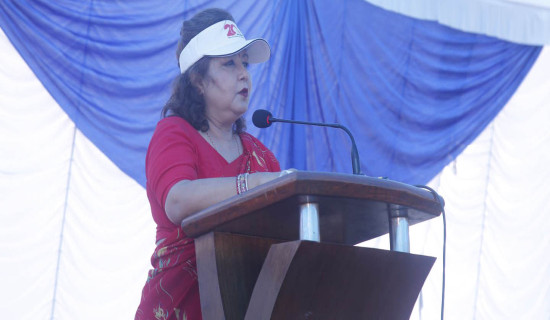- Saturday, 23 August 2025
The Human Face of Climate Change: Stories from the Fields of Sigas Rural Municipality
By Yadav Singh Dhami, Rahul Aryal, Samikchhya Gurung, Aug 22: In the remote hills of Sigas Rural Municipality in Baitadi district, climate change is not a separate threat; it is an inhabited reality experienced by the people residing there.
Here, the cracked soil of dehydrated fields, the peacefulness of absent springs, and the silent resignation of farmers who have seen their harvests reduced year after year are the real indicators of global warming rather than degrees or statistics.
For generations, the residents of Sigas have relied on agriculture not just for nutrition but for identity and dignity. At present, that way of life is under siege.
We Used to Know the Seasons
Meteorological data from the past 30 years paints a stark picture: rising temperatures, irregular rainfall, and prolonged dry spells. But it is the voices of the people that bring these statistics to life.

A farmer, retired teacher, and elderly person Mr. Ram Singh Dhami of Sigas-2 recall the times when the rain used to bring joy among their faces but now, that is missing. “We used to know the seasons, when they came on time,” says Mr. Dhami. We planted, harvested, and lived. Now, we wait and wait. And it takes everything with it when it arrives.
The once-predictable seasons have become a gamble. Crops like maize, wheat, and millet, staples of the local diet, are failing more frequently. The production of lentils crops has also reduced significantly over the years. The people who used to sell their crops due to surplus production to the local vendors are now not able to sustain their livelihood. The earnings by selling the crops used to cover the expenses of the family in the past but now the farmers of Sigas are not able to fulfill their daily needs for fooding. Pests and diseases which used to be rare then, now thrive in the summer season. This region of Baitadi is hilly and the irrigation system is not available; the farmers must depend on the seasonal rain to cultivate the crops. In the past, the winter season used to come at predicted times, and the snow was visible in the fields of Sigas but in recent years the winter season has been dry without any rain. Due to this, farmers are forced to adapt or abandon their fields.
Women on the Frontlines

Women, who form the backbone of rural agriculture, are bearing worst of this crisis. With men migrating for work to cities and India, women are left to manage farms, households, and, increasingly, the burden of climate adaptation. To ensure the accuracy of the data, researchers employed both qualitative and quantitative methodologies during the research study. The research showed the involvement of women in agriculture is high. The data also showed the most of these have completed +2 level of their study and had to take break from study due to various reasons like family responsibilities, taking care of children, lack of funding for education, etc. “In past the crops used to last for all year, and we sold various crops to local market” said Sarashwoti Devi Dhami, a farmer in her late forties. But nowadays the crops we grow for only three to six months, and we must buy from the market to sustain it for a year long. The local crops are frequently failing due to adaptation techniques and lack of training related to climate smart agriculture.
The local NGOs have formed women groups to helped them to adapt, combat and cultivate climate resilient crops to cope with climate hazards. There are not many organizations working with women and agriculture, only one that the farmers recall of, Sada Nepal. “They are not just farmers,” says Dipesh Singh Dhami, a local agricultural technician and employee of SADA Nepal. “They are scientists, innovators, protector and caretakers of the land.” From shifting planting calendars to experimenting with drought-resistant crops, women in Sigas are leading the charge in climate resilience often without formal training or support. The Ward Chairperson, Mr. Air, and JTA Mr. Dhami have emphasized that local groups and the local-level government are offering new adaptation strategies, including training, awareness campaigns, and informal education. The majority of those participating in these programs are local women.
Tradition Meets Innovation
Despite the challenges, hope persists. Farmers are blending Indigenous knowledge with modern techniques. The community is moving towards new and improved seed adoption, which are climate-resilient varieties. The adoption of drought-resistant crops demonstrated moderate implementation levels. Water conservation has become a top priority, and locals are promoting water-saving irrigation and organic farming, which also indicates that implementing soil conservation techniques has been effective.
Overall, the findings highlight that education plays a critical role in shaping farmers’ ability to use climate information effectively, even those with minimal or no formal education can find value in such information. The farmers of Sigas-2 understand the importance of climatic data for improving their farming practices. Yet, these efforts remain fragmented. Government programs exist, but awareness and access are limited. The local government had provided aid to the locals through different programmes, and various local organizations were also used to distribute improved seeds and organize various programmes,” says Ward Chairperson Thagendra Singh Air. But the locals argue no presence of such programme implementation, although they have worked with some community-based organizations that use indigenous knowledge to combat the effects of climate change in farming rather than modern knowledge.
From the Hills to the World Stage

These stories from Sigas echo across Nepal’s hills and valleys, and they are finally being heard on the global stage. From May 16-18, 2025.Nepal hosted the second edition of the Sagarmatha Sambaad at The Soltee Hotel, Kathmandu. It was a top-level climate discourse named after Mt. Everest. The theme of the discussion was “Climate Change, Mountains, and the Future of Humanity.” The event brought together over 300 participants, including ministers, scientists, youth leaders, and civil society representatives in one place. The Sambaad concluded with a 25-point “Sagarmatha Call for Action,” advocating urgent global cooperation to protect mountain flora and fauna.
The BaYu Sambaad (Balbalika Tahta Yuba Sambaad) on 26 April 2025 was held, which was a parallel youth dialogue, giving voice to children and young Nepalis who are getting a climate-altered future. “Children and Youth are not just victims of climate change, they are powerful agents of change,” said Dr. Alice Akunga, United Nations Resident Coordinator to Nepal. “Their voices must shape our climate response at every level”. Similarly, the Himali Sambaad focused on the unique vulnerabilities of mountain communities, highlighting the need for bottom-up adaptation strategies and indigenous knowledge systems.
By promoting international frameworks that acknowledge the specific vulnerability of high-altitude regions, the Sagarmatha Sambaad seeks to establish Nepal as a pioneer in mountain-specific climate action.
A Call for Climate Justice
Nepal contributes only 0.027% to global greenhouse gas emissions (GHGs), yet areas like Sigas are among the most affected ones. This is a justice issue as much as an environmental one. These stories from Sigas-2 are a small-scale version of a global crisis. They provide a reminder that the effects of climate change extend beyond sea level rise and glacier melting. It concerns farmers, moms, young people, and kids whose lives are altered by events beyond their control.
Sigas-2 residents continue to plant seeds in uncertain soil as the world discusses carbon markets, climate finance, carbon credits, and climate summits, hoping that someone, somewhere, is paying attention. In the face of this crisis, the people of Sigas are not waiting for rescue. They are struggling, transforming, and adapting. But they should not have to do it alone.
Policymakers must move beyond rhetoric, which focuses on the grassroots, not just the capital. The international community must recognize the moral weight of Nepal’s mountains, hills, valleys, plains, and forests. Nepal’s leadership at COP30 and in its NDC 3.0 must be bold and rigid. Academics and researchers must continue to document, amplify, and humanize these stories. And for the rest of us (citizens, readers, voters), we have to listen, care, and act. We all have a part to play, whether it is by sharing these tales, keeping lawmakers accountable, or offering support to local climate change initiatives.
Because the people of Sigas are not just victims of climate change. They are the face of resilience. And their fight is our fight.
(The authors are the postgraduate student of social science)


